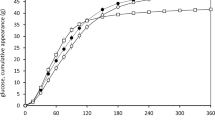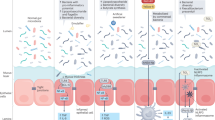Abstract
IN 1957 Borgström et al.1 introduced the use of un-absorbable polyethylene glycol (PEG) for quantitative investigations of absorption of fat, protein and carbohydrate from the intestine. Stimulated by their communication, a number of authors2–4 used PEG to examine absorption. (After the administration of PEG and a food mixture of known composition in the withdrawn specimen of the intestinal contents the PEG concentration and investigated nutrients are estimated. From the two values the percentage ratio of the absorbed nutrient is calculated.)
This is a preview of subscription content, access via your institution
Access options
Subscribe to this journal
Receive 51 print issues and online access
$199.00 per year
only $3.90 per issue
Buy this article
- Purchase on Springer Link
- Instant access to full article PDF
Prices may be subject to local taxes which are calculated during checkout
Similar content being viewed by others
References
Dahlquist, A., Lundh, G., and Sjövall, J., J. Clin. Invest., 36, 1521 (1957).
Lundh, G., Acta Chir. Scand., Supp. 231 (1958).
Borgström, B., J. Clin. Invest., 39, 809 (1960).
Lindquist, B., and Lundh, G., Amer. J. Dis. Child., 101, 454 (1961).
Wiggins, H. S., and Dawson, A. M., Gut, 2, 373 (1961).
Dole, V. P., J. Clin. Invest., 35, 150 (1956).
Author information
Authors and Affiliations
Rights and permissions
About this article
Cite this article
VAVŘINKOVÁ, H., KRONDL, A. Use of Polyethylene Glycol in Investigations of Absorption of Fat. Nature 208, 293–294 (1965). https://doi.org/10.1038/208293a0
Issue Date:
DOI: https://doi.org/10.1038/208293a0
Comments
By submitting a comment you agree to abide by our Terms and Community Guidelines. If you find something abusive or that does not comply with our terms or guidelines please flag it as inappropriate.



